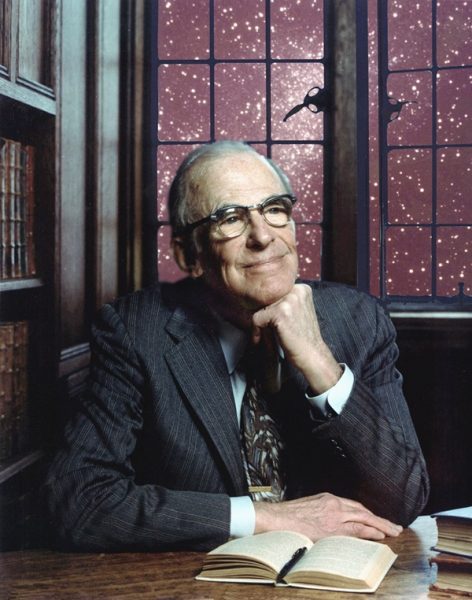Lyman Strong Spitzer: Namesake of the Spitzer Space Telescope – Astronomy Magazine
The official portrait of astrophysicist Lyman Strong Spitzer, Jr., who is credited with being the first to propose building a space-based telescope, eventually leading to the Hubble Space Telescope. To honor the visionary scientist, NASA’s Space Infrared Telescope Facility was renamed the Spitzer Space Telescope, which, after 16 years of service, will be shut down on January 30, 2020.
Denise Applewhite/princeton University (public domain)
Astronomy uses a lot of acronyms — some clever, some silly. But one astronomical instrument that only sounds like an acronym is Spitzer, a space telescope that’s spent the past 16 years scouring the heavens for infrared light.
The Spitzer Space Telescope’s intriguing name pays homage to an astrophysicist named Lyman Strong Spitzer, Jr. who is often considered one of the most renowned scientists of the 20th century. In addition to a slew of valuable contributions to astrophysics, Spitzer is recognized as the first person to propose launching a large telescope into space to help us get a better view of the cosmos.
Who was Lyman Spitzer?
A relative of inventor Eli Whitney, Lyman Strong Spitzer, Jr. was born in 1914 in Toledo, Ohio. Always eager to learn, Spitzer spent much of his early adult life hopping between some of the United States’ most prestigious universities.
According to a detailed article from NASA’s Jet Propulsion Laboratory (JPL), Spitzer earned a bachelor’s degree in physics from Cambridge University in 1935, a master’s degree from Princeton in 1937, and a Ph.D. in astrophysics from Princeton in 1938. He then spent a year as a postdoctoral fellow at Harvard before earning a faculty position at Yale in 1939. At this point, he was only in his mid 20s.
After the U.S. joined World War II, Spitzer was recruited by the U.S. Navy’s Division of War Research at Columbia University. There, he helped carry out valuable underwater sound research which ultimately led to the development of sonar technology. Following the war, Spitzer ventured back to Yale to briefly continue his tenure as a professor.
Proposing a space-based observatory
In 1946, after becoming part of a think-tank set up by the U.S. military, Spitzer published a report titled “Astronomical Advantages of an Extra-Terrestrial Observatory,” which proposed the U.S. government should launch a large telescope into space. This way, Spitzer argued, astronomers could bypass the obscuring effects of Earth’s turbulent atmosphere, allowing for views of the cosmos with unprecedented resolution. Additionally, Spitzer’s report notes that a telescope in space would allow for detailed observations in infrared and ultraviolet light, wavelengths largely blocked by Earth’s atmosphere. This, Spitzer hoped, would open the door to observations of the universe that were never before possible.
A year later, at just 33, Spitzer was appointed chairman of Princeton’s Department of Astrophysical Sciences, as well as the director of Princeton’s Observatory. Working with Martin Schwarzschild (son of German astrophysicist Karl Schwarzschild, who found the first exact solution to Einstein’s field equations of general relativity), Spitzer helped turn Princeton’s astrophysics department into a world-class research facility.
At Princeton, Spitzer pursued his interest in star formation and carried out foundational research on the interstellar medium — the dusty material that populates the space between stars and condenses to form new ones.







